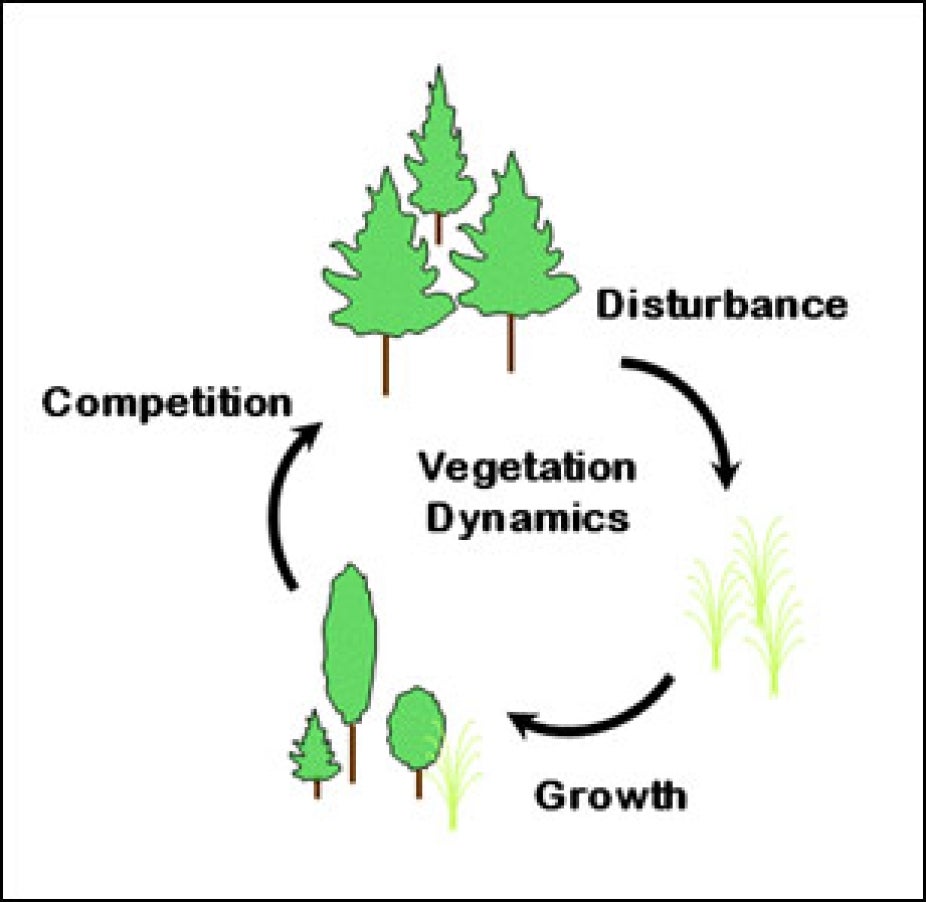CLM Model Description
The model represents several aspects of the land surface including surface heterogeneity and consists of components or submodels related to land biogeophysics, the hydrologic cycle, biogeochemistry, human dimensions, and ecosystem dynamics. Specific processes that are represented include:
- Vegetation composition, structure, and phenology
- Absorption, reflection, and transmittance of solar radiation
- Absorption and emission of longwave radiation
- Momentum, sensible heat (ground and canopy), and latent heat (ground evaporation, canopy evaporation, transpiration) fluxes
- Heat transfer in soil and snow including phase change
- Canopy hydrology (interception, throughfall, and drip)
- Snow hydrology (snow accumulation and melt, compaction, water transfer between snow layers)
- Soil hydrology (surface runoff, infiltration, redistribution of water within the column, sub-surface drainage, groundwater)
- Plant hydrodynamics
- Stomatal physiology and photosynthesis
- Lake temperatures and fluxes
- Dust deposition and fluxes
- Routing of runoff from rivers to ocean
- Volatile organic compounds emissions
- Urban energy balance and climate
- Carbon-nitrogen cycling
- Dynamic landcover change
- Land management including crops and crop management and wood harvest
- Ecosystem Demography (FATES, optional)
Surface Heterogeneity
The land surface is represented by 5 primary sub-grid land cover types (landunits: glacier, lake, wetland, urban, vegetated) in each grid cell. The vegetated portion of a grid cell is further divided into patches of plant functional types, each with its own leaf and stem area index and canopy height. Each subgrid land cover type and PFT patch is a separate column for energy and water calculations.
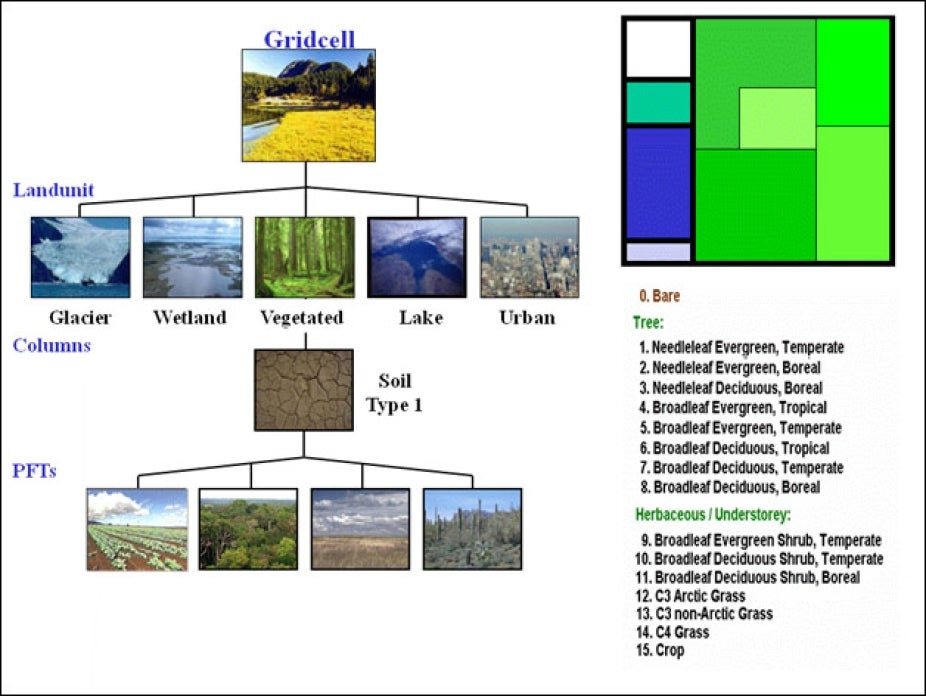
Biogeophysics
Biogeophysics refers to the instantaneous exchanges of energy, water, and momentum with the atmosphere. It concerns aspects of micrometeorology, canopy physiology, soil physics, radiative transfer, and hydrology. Dust emissions and aerosol deposition onto snow are also represented in the model.
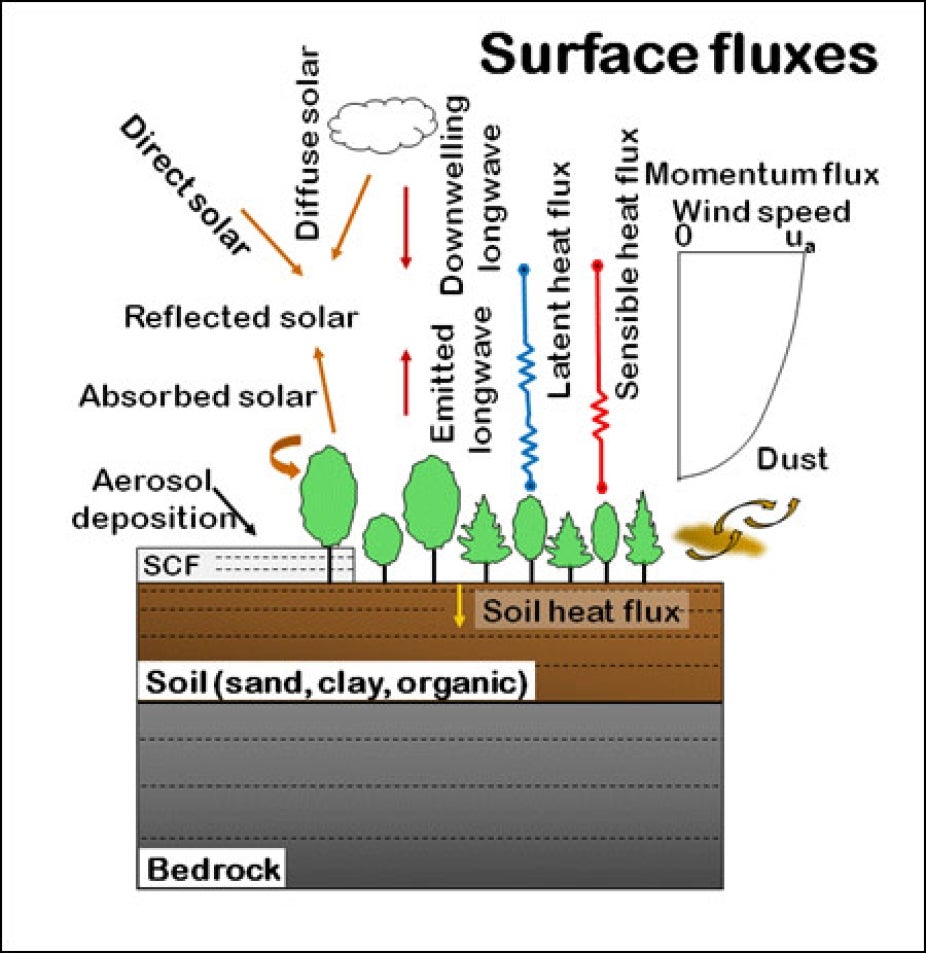
Hydrologic Cycle
The hydrologic cycle over land in CLM includes representations of interception of precipitation by plant foliage and wood, throughfall and stemflow, transpiration, soil evaporation, canopy evaporation, infiltration, runoff, soil water, aquifer recharge, and snow. These are directly linked to the biogeophysics and also affect temperature, precipitation, and runoff. Total runoff (surface and sub-surface runoff) is routed downstream to oceans using a river transport model (RTM) that is synchronously coupled to CLM for hydrological applications as well as for improved land-ocean-sea ice-atmosphere coupling in the CESM.
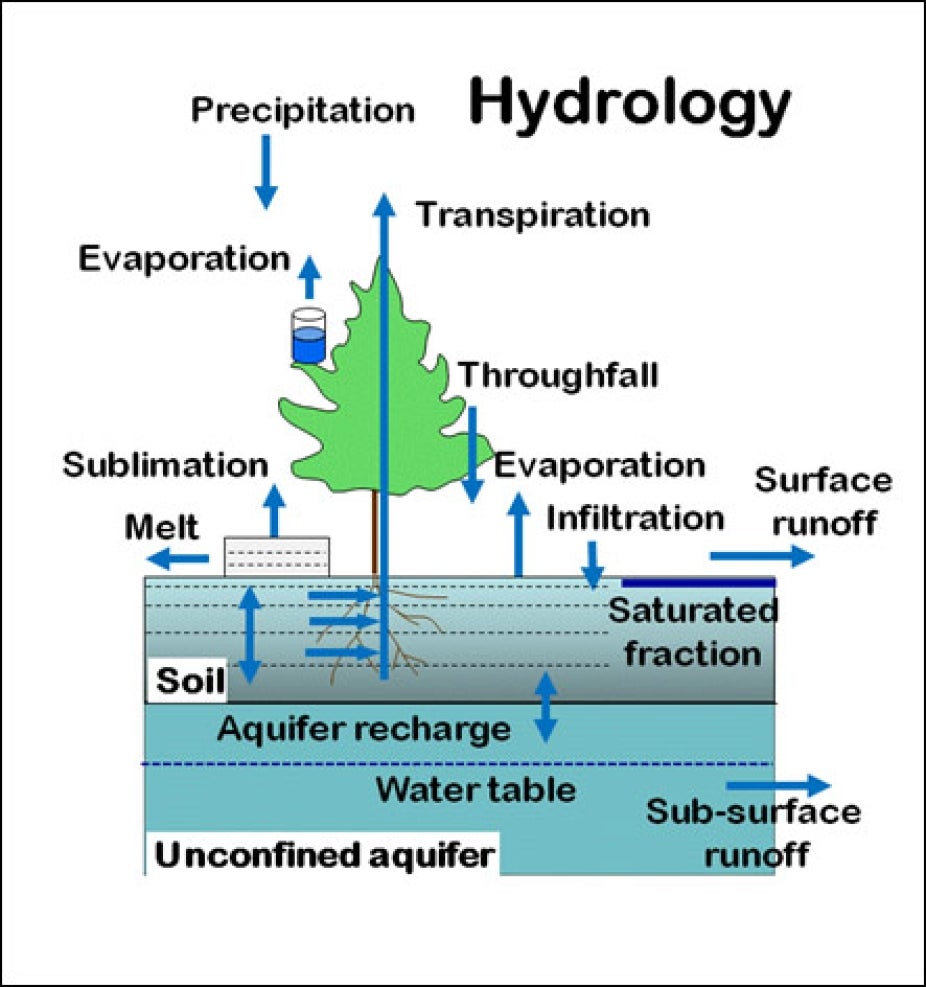
Biogeochemistry
Biogeochemistry refers to the cycling of carbon and nitrogen through the plant / soil system and the interactions between these cycles as mediated by biological mechanisms of plants and soil heterotrophs. The model is fully prognostic with respect to all carbon and nitrogen state variables in the vegetation, litter, and soil organic matter as well as the seasonal timing of new vegetation growth and litterfall. The cycling of carbon is controlled by climate, land cover/land use, fire, atmospheric CO2 concentration, and nitrogen deposition ???. Biogenic volatile organic compound emissions from plants are also simulated.
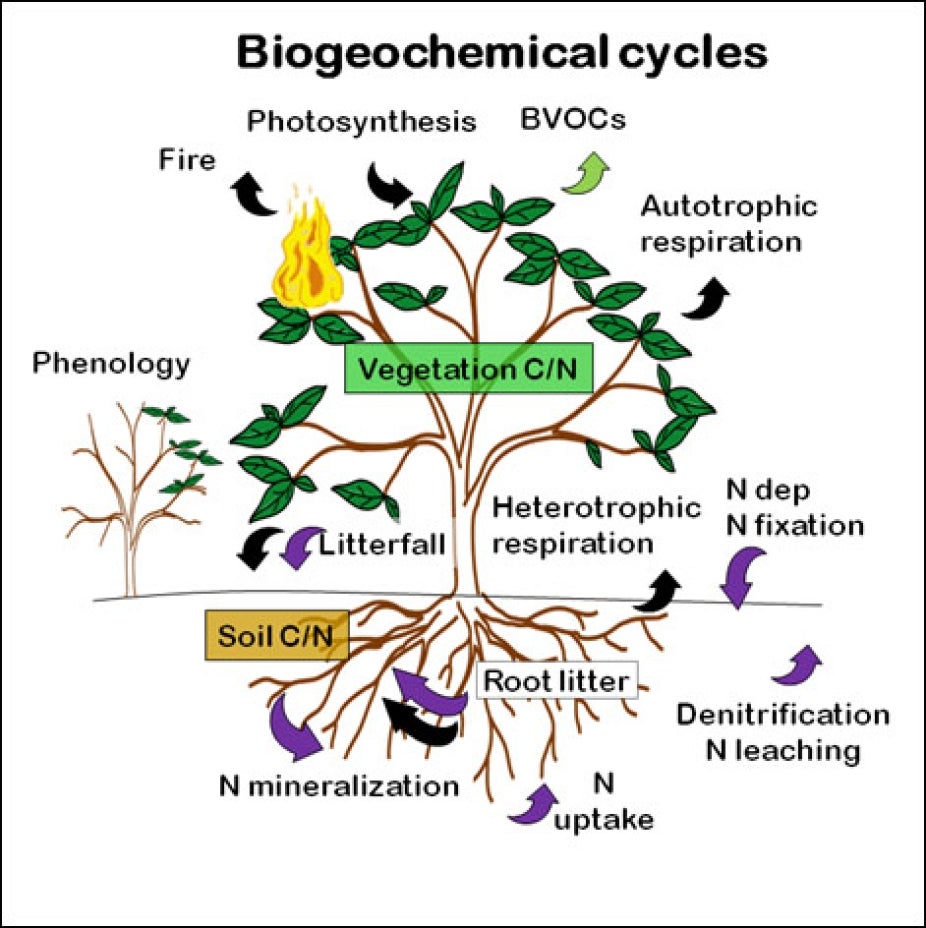
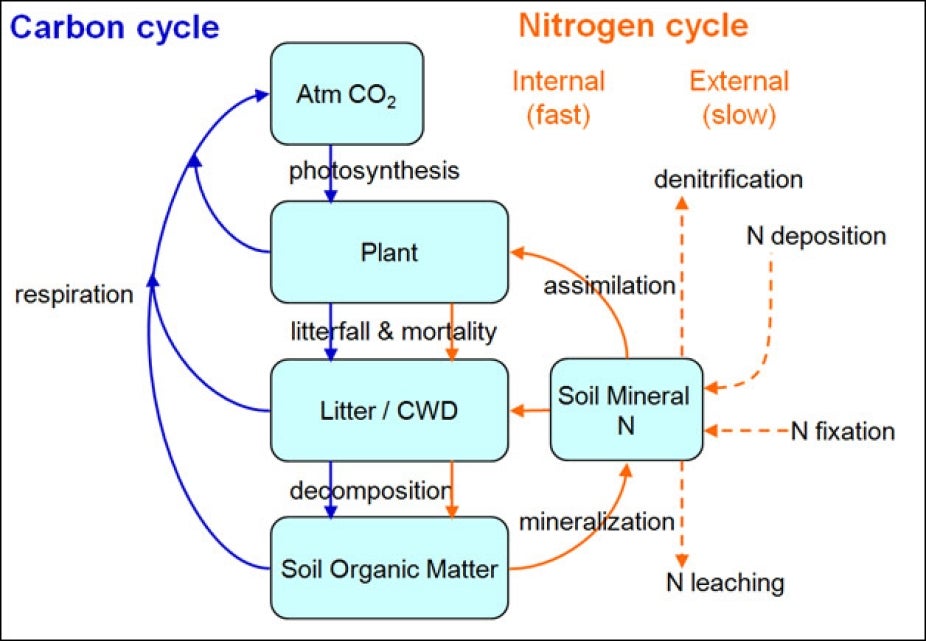
Human Dimensions
CLM addresses several aspects that enable the study of two-way interactions between human activities at the land surface and climate including land cover/land use change, agricultural practices, and urbanization.
CLM includes a treatment of mass and energy fluxes associated with prescribed temporal change in land cover. Using an annual time series of the spatial distribution of PFTs and wood harvest, CLM diagnoses the change in area for PFTs at each model time step and then performs mass and energy balance accounting necessary to represent the expansion and contraction of PFT area. The biogeochemical impacts of land use and land cover change are simulated through changes in CLM carbon pools and fluxes.
CLM includes the option of running with specific mid-latitude crops (maize, temperate cereals, soybean). These crops are represented with more realistic phenology and carbon allocation parameterizations than unmanaged crops. Irrigation is also represented.
The urban environment as simulated in CLM is based on the “urban canyon” concept and allows study of how climate change affect urban energy balance and climate and evaluation of possible urban planning and design strategies to mitigate warming (e.g., white roofs). The canyon system consists of roofs, walls (shaded and sunlit), and canyon floor. The canyon floor is divided into pervious (e.g., to represent residential lawns, parks) and impervious (e.g., to represent roads, parking lots, sidewalks) fractions. The heat and moisture fluxes from each surface interact with each other through a bulk air mass that represents air in the urban canopy layer for which specific humidity, wind, and temperature are prognosed. The urban canopy air temperature can be compared with that from surrounding vegetated/soil (rural) surfaces in the model to ascertain heat island characteristics.
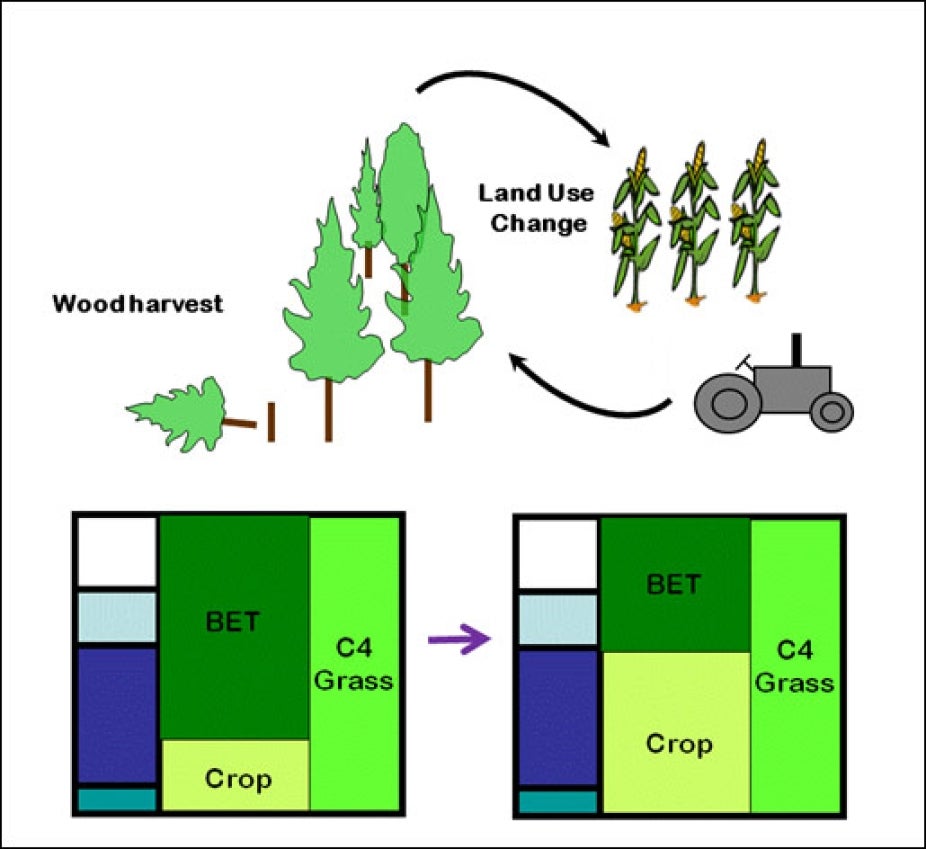

Ecosystem Dynamics
Natural ecosystem processes such as plant establishment and competition for light are represented in CLM as an extension to the biogeochemistry model. With these processes the CLM becomes a Dynamic Global Vegetation Model (DGVM), which can simulate changes in plant biogeography in response to environmental change.
